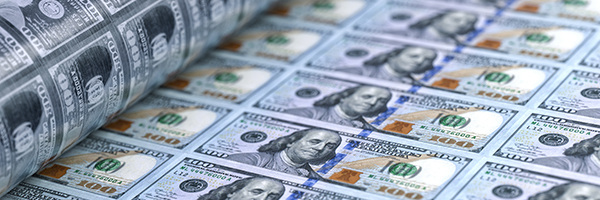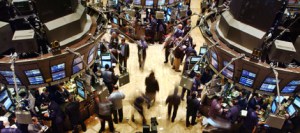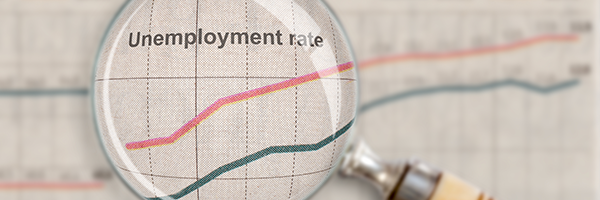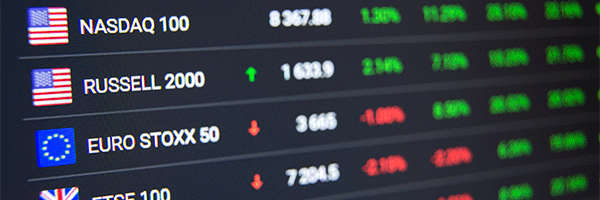
May 26, 2023 | Daily JAM, Morning Briefing |
The personal consumption expenditures price index, the Fed’s preferred inflation gauge, rose a faster-than-expected 0.4% in April, the Commerce Department reported this morning, May 26. Core PCE inflation also rose by 0.4% in April. “This is the wrong direction for the Fed,” Diane Swonk, chief economist at KPMG, told Bloomberg. “June will depend on getting outside of debt ceiling issues but a July hike is now in play.”

May 24, 2023 | Daily JAM |
Minutes from the Federal Reserve’s May 3 meeting show that some Fed officials want the central bank to be ready to step in if inaction in Washington produces a big drop in the financial markets. Chair Jerome Powell has in public repeatedly said that “no one should assume that the Fed can protect the economy” if the Treasury can’t make good on all federal obligations. But that doesn’t mean, the minutes suggest, that the Fed will do nothing.

May 23, 2023 | Daily JAM, Mid Term |
Today, May 23, finally saw some fear in stock prices. The Standard & Poor’s 500 closed down 1.03% on the day. The Dow Jones Industrial Average ended down 0.59%. The NASDAQ Composite was down 1.17% and the NASDAQ 100 dropped 1.21%. The small-cap Russell 2000 was off just 0.21%. That’s a remarkably small drop considering the S&P 500 was up 9.97% for 2023 as of the close yesterday. And the NASDAQ Composite was ahead 22.01% for the year as of the May 22 close. Looking at this market, what cries out for explanation isn’t why stocks slide today but why they have remained so strong in the signs of a slowing economy and a continued debt ceiling crisis that could, potentially, result in a default by the United States.

May 22, 2023 | Daily JAM, Morning Briefing, Short Term |
Last week Federal Reserve chair Jerome Powell said that the Fed could hold off on another interest rate increase at its June 14 meeting. That comment wz one reason that the CME FedWath tool showed the odds of no increase at the meeting jumping to 82.6% on Friday, May 19. But today, Federal Reserve Bank of St. Louis President James Bullard and Neel Kashkari, head of the Minneapolis Fed said, essentially, that “could” doesn’t mean will. Bullard backed two more 2023 interest-rate increases and Kashkari said if the central bank pauses next month it should signal tightening isn’t over.

May 15, 2023 | Daily JAM, Mid Term, Videos |
This week’s Trend of the Week is Credit Squeeze. SLOOS (Senior Loan Officer Opinion Survey), a Fed survey, asks bank lending officers what they’re seeing in the credit market for commercial industrial loans. In the most recent survey, 46% of these officers report that their banks are making it harder to get loans. This is a textbook example of Hyman Minsky’s credit cycle. After a period of booming lending, the credit cycle returns to a period of tightening credit, often coinciding with eye-opening events like the Silicon Valley Bank failure, and a slowing down of the economy overall. The SLOOS report also showed a 56% drop in demand for commercial loans in the first quarter–an indicator that companies are aware that loans are harder to come by. Companies are having real trouble raising capital which is resulting in merger and/or acquisition deals for early-stage companies and employee layoffs as CEOs and CFOs attempt to hoard cash. The signs are that the Fed is taking notice of this contraction in the credit market and is starting to factor it into rate hike decisions. The Fed may decide it doesn’t need as many interest rate increases as it originally thought if the supply of credit is shrinking quiickly.

May 12, 2023 | Daily JAM, Mid Term, Morning Briefing |
It’s only a survey of consumer sentiment so it’s not very important to the financial markets, right? Wrong. The University of Michigan survey of consumer sentiment for May illustrates perfectly the trap that the Federal Reserve is caught in right now.

May 5, 2023 | Daily JAM, Morning Briefing |
The U.S. economy added 253,000 jobs in April, the Bureau of Labor Statistics announced today, Friday, May 5. The official unemployment rate dipped by 10 basis points to 3.4%. (The U-6 unemployment rate, which includes discouraged workers who have stopped looking for a job and workers with part-time jobs who would like full-time work, fell to 6.1% in April (before seasonal adjustments) from 6.8% in March.) Economists were looking for the economy to add just 180,000 jobs in the month. The number is a huge surge after a drop from 472,000 jobs added in January to a revised 165,000 in March.

May 4, 2023 | Daily JAM, Morning Briefing, Short Term |
Initial claims for unemployment rose by the most in six weeks while continuing claims fell in the week ended April 29, the Labor Department reported this morning. Initial unemployment claims rose by 13,000 to 242,000. Economists surveyed by Bloomberg were looking for 240,000 initial claims. Continuing claims, which include people who have received unemployment benefits for a week or more and are a good indicator of how hard it is for people to find work after losing their jobs, fell by 38,000 to 1.81 million in the week ended April 22. That marked the biggest drop since July. If you think that a rise in unemployment and a weakening of the labor market is a good thing, as the Federal Reserve does, because it sets the stage for a decline in inflation, then today’s data had its negative aspects too. A separate report out today showed U.S. worker productivity declined in the first quarter by more than forecast and labor costs accelerated. That’s a strong argument for higher inflation.

May 3, 2023 | Daily JAM, Short Term |
Immediately after the Federal Reserve’s decision to raise interest rates another 25 basis points today, stocks moved up on a reading of the Fed’s 2 p.m. statement released with the rate news that saw the Fed as saying it would begin to cut interest rates soon. At 2:26 p.m. New York time the Standard & Poor’s 500 was up 0.58%. In Wednesday’s statement, the Fed said, “In determining the extent to which additional policy firming may be appropriate to return inflation to 2% over time, the committee will take into account the cumulative tightening of monetary policy, the lags with which monetary policy affects economic activity and inflation, and economic and financial developments.” In March, the central bank had said it “anticipates that some additional policy firming may be appropriate in order to attain a stance of monetary policy that is sufficiently restrictive to return inflation to 2 percent over time.” But stocks peaked for the day shortly after Fed chair Jerome Powell began his press conference at 2:30 p.m.

May 3, 2023 | Daily JAM, Morning Briefing |
Today, Federal Reserve’s Open Market Committee raised the Fed’s benchmark rate by 25 basis points to a target range of 5%- to 5.25%. The interest rate increase was expected by just about everyone. At 1:50, 10 minutes before the Fed’s announcement, the Fed Funds Futures market had priced in 88.2% odds of a 25 basis point increase. The Fed’s statement omits prior language from the March meeting that said “some additional policy firming” may be warranted. Instead, the Fed said it will take into account various factors “in determining the extent to which additional policy firming may be appropriate.” In other words, rate increases or a pause will depend on the data.

April 30, 2023 | Daily JAM |
The Federal Reserve’s meeting on Wednesday, May 3, is a big story but it’s not the only story. There will also be earnings from Apple, Ford, Qualcomm, and Starbucks. The Federal Reserve is very likely to raise interest rates another 25 basis points on Wednesday. The CME FedWatch Tool puts the odds at 83.9%. That’s down from 89.1% on April 21 but up from just 47.1% on March 29. Unless the Fed is playing games with the market–they are such jokesters, aren’t they–I think we’ll get that 25 basis point boost. After all, it’s not like inflation has waved the white flag lately, right? The key for stock market direction, however, isn’t what the Fed does at this meeting but what the Fed says about future interest rate increases, or the lack thereof. The Goldilocks scenario that is supporting stocks at current levels is built on a relatively quick end to rate increases and then a relatively rapid pivot to interest rate cuts–by the end of 2023. Wall Street will be listening for anything that hints at that scenario in the Fed’s post-meeting statement. And stocks will rally if Wall Street thinks it hears anything to confirm its hopes. On Friday, the CME FedWatch Tool put the odds for a June 14 interest rate increase at just 26.8% and the odds that the Fed will put interest rates on hold at 62.2%. There’s enough wiggle room in those odds to convince me that the market isn’t all that certain about the Fed ending interest rate increases at that meeting.The other story this week is earnings.

April 12, 2023 | Daily JAM, Long Term |
Minutes from the Federal Reserve’s March 21-22 meeting show the central bank’s staff projecting a mild recession later in 2023 with a recovery from 2024 to 2025. A key reason cited by the staff: stress in the banking sector.











